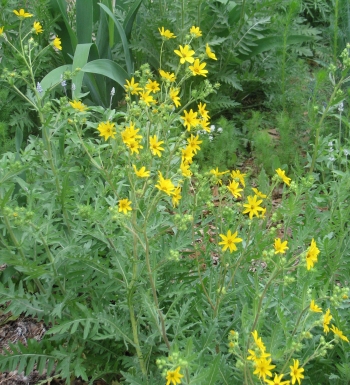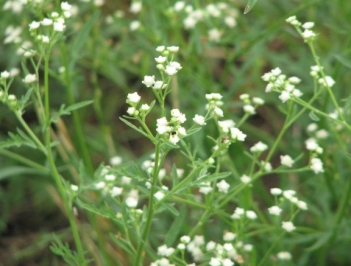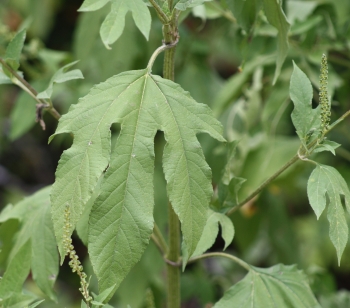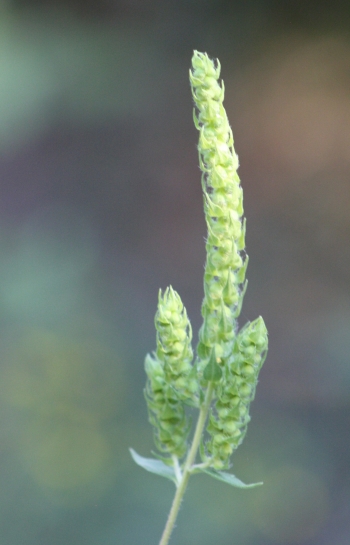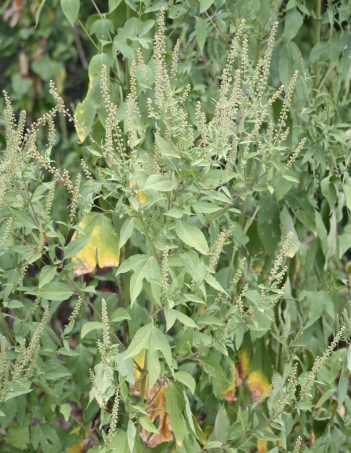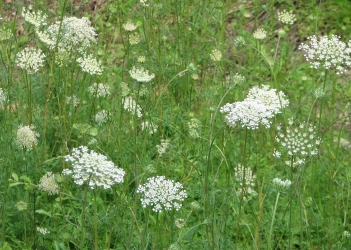Woolywhite (Old Plainsman) Hymenopappus artemisiifolius. A pithy stemmed flower over 2” tall, which begins as a rosette of coarse, narrow, compound pinnate leaves in which the pointed end leaflet is longer and more lance-like than side leaflets. Leaves have no stem but do not clasp the stiff stalk. As the smooth stalk grows, the leaves are arranged in an alternating spiral around it, becoming less complex toward the top. The loose inflorescence branches frequently from leaf nodes in a spiral pattern, dividing into sprays of small flower heads. Each head is composed of tiny, white, papery flowers with yellow centers, so tightly clustered they look like one large, complex flower. Pistols and stamen protrude beyond the flowers. PL, PDU (100) 4/17/16-6/15/16; 4/7/17- ; 4/22/18; 4/28/19; 4/11/20

Wooleywhite habit; a rosette of deeply pinnate leaves that produces a tall, pithy stalk with alternate, pinnate leaves, turning into a branching flower spike composed of clusters of small, papery, white flowers
Note; the inflorescence branches readily at leaf axils, each side spike bearing dense heads of tiny, white flowers

Note; narrow, deeply pinnate leaves in which the center lobe much longer than the side lobes, arranged in an alternating spiral around smooth, pithy stems

Note; sprays divide into stems tipped with tight flower head, which look like a complex flower, but which are composed of papery, white flowers with yellow centers
Note; pistol and stamen protrude beyond the ends of the tiny flowers












